Osteochondrosis is a widespread intervertebral disc disease that occurs in people of all ages.Today, more than 40% of people under the age of 35 are diagnosed with the disease, while among older people, nine in 10 people have it.It has several stages of development, and the earlier the pathology is detected, the easier and more effective the treatment will be, and the lower the risk of dangerous complications.
What is osteochondrosis
The intervertebral discs are located between the vertebrae and act as shock absorbers that absorb the pressure of walking or other physical activities.Depending on their location, they differ in size: in the cervical region, the intervertebral discs are the smallest, in the lumbar region they are the largest.
Their construction is the same.In the center is the nucleus pulposus, which is the main component of the intervertebral disc and has high elasticity.It is surrounded by fibrous membranes and endplates.
Osteochondrosis is a degenerative dystrophic disease in which the shape and size of the intervertebral discs change due to wear and tear, creating prerequisites for the development of hernias, vertebral body deformations, spondylosis and other diseases.
Thinning of the intervertebral disc is the result of dystrophy of the cartilage tissue, causing its elasticity to gradually decrease and its fragility to increase.
As a result, the disc changes position, decreases in height, and microcracks form in the fiber membrane.This creates serious prerequisites for the formation of intervertebral hernia, compression of spinal cord roots or blood vessels.
The slightest change in a disk's condition can cause disruption of its functionality.This is accompanied by varying degrees of pain.At the same time, prerequisites are created for the development of diseases of the internal organs, since the quality of their activity directly depends on the condition of the spine and the conductivity of bioelectrical impulses along the nerves.
It can affect one or more discs anywhere in the spine.Therefore, to diagnose osteochondrosis:
- cervical vertebra;
- thoracic;
- lumbar spine.
In particularly severe cases, the pathological process involves most of the discs of the spine and is accompanied by discomfort and almost complete loss of function throughout the back.But most commonly, osteochondrosis affects the lumbar spine, which bears the greatest load, and the discs of the cervical spine, because they are highly mobile.
develop
When osteochondrosis occurs, it can be roughly divided into 4 stages:
- Hydration levels in the disc decrease, causing it to become dehydrated and form microcracks.Usually there are no early signs of disease at this stage.
- The intervertebral disc height decreases, leading to the appearance of the first pathological symptoms.During this stage, the distance between the segments decreases, causing the tension on the spinal ligaments to decrease and creating the possibility of the vertebrae moving out of their natural position, a condition known as spondylolisthesis.In this case, a wave-like course of the disease is most often observed.It can differentiate between an exacerbation phase with acute pain and a remission phase with no discomfort or soreness at all.
- The affected disc deforms, forming a herniation or prolapse.Sometimes the pathological process involves the joints, manifesting as arthrosis or vertebral subluxation.During this stage, the immune system reacts to processes occurring in the spine, producing sterile inflammation and causing swelling of the tissue surrounding the affected motor segments of the spinal cord.In this condition, frequent pain, reflex muscle spasms, and limited mobility can be observed.In rare cases, symptoms of neurological deficit (radiculopathy) have occurred due to compression of nerve fibers by a herniated disc.
- Development of complications.Because the human body has extensive compensatory capabilities, when the intervertebral discs lose the ability to perform their functions, osteosynthetic processes are activated to hold the vertebrae in a stable position.This results in the formation of bony protrusions (osteophytes) at the edges of the vertebral bodies in the affected spinal motion segments.As a result, due to them, two or more vertebrae become firmly fused together to form a single unit, that is, spondylosis occurs.This invariably leads to nerve compression and acute neurological symptoms in the form of paresis, paralysis, and corresponding severe disturbances in visceral function.
reason
Today, there are many theories about the formation of osteochondrosis, including vascular, mechanical, genetic, hormonal, infectious and allergic, etc.But none of them can fully explain the development mechanism of intervertebral disc tissue changes.Therefore, it is likely that they all complement each other.
Therefore, a number of different factors may contribute to the development of osteochondrosis.Among them, the most important are:
- genetic predisposition;
- Perform strenuous physical labor on a regular basis;
- maintain a sedentary lifestyle;
- Presence of scoliosis or other spinal deformity;
- Back injuries;
- Unbalanced diet and vitamin deficiency;
- infectious disease;
- Metabolic disorders;
- Congenital spinal anomalies (Kimerli anomaly, Chiari anomaly, craniovertebral anomalies, sacralization, lumbarization);
- overweight;
- Often under severe stress.
It is believed that the most significant effect on disc conditions is sustained overloading of a certain spinal motion segment.This can be not only doing monotonous hard physical work, but also the habit of bending over frequently or sitting for long periods of time.In this case, the discs, muscles, and ligaments are put under extra stress, and other factors only exacerbate the situation.
Overall, osteochondrosis can be called an almost natural age-related disease, an inevitable price of walking upright.
symptom
The earliest sign of the development of the disease is the appearance of a creaking sound in the part of the spine where the beginning of degenerative dystrophic changes is observed.This is the result of a trophic disorder of the intervertebral disc and its dehydration progression.At this stage, patients rarely seek medical help.Therefore, their daily routine, eating habits and other factors remain unchanged, which leads to the worsening of the condition and the transition to the second stage.
As a result, the typical symptoms of osteochondrosis begin to appear:
- Severe muscle tightness in the affected area only on one or both sides of the spine;
- Severe pain that increases with every movement and becomes more severe and unbearable as time goes by;
- numbness in the arms or legs;
- weakness;
- Stiffness of movement, unauthorized restriction of movement;
- Muscle tone decreases until complete atrophy;
- bad posture;
- Blood pressure spikes.
As the pathology progresses, symptoms of osteochondrosis worsen.Eighty percent of patients experience dull pain in the affected spinal motion segment, which is also characteristic of myositis.
cervical osteochondrosis
When the cervical spine is affected, pain often radiates to the shoulder girdle, arms, and other symptoms of neurological disease occur.The patient holds the head in the least painful position and turns the entire body if necessary.
In addition, lesions may occur in organs innervated by the cervical spinal cord area:
- Tinnitus and diseases of the ear, nose and throat organs;
- Dizziness;
- blurred vision;
- Migraine;
- increased levels of irritability and anxiety;
- sleep problems;
- increased risk of allergic reactions;
- Thyroid hormone levels decrease.
In cervical osteochondrosis, vertebral artery syndrome and vegetative vascular dystonia are also commonly diagnosed.
Osteochondrosis infections of the cervical spine, especially when complicated by herniations and intervertebral hernias, can cause compression of blood vessels.This causes damage to the blood supply to the brain and may be accompanied by dizziness, loss of consciousness, or even stroke.
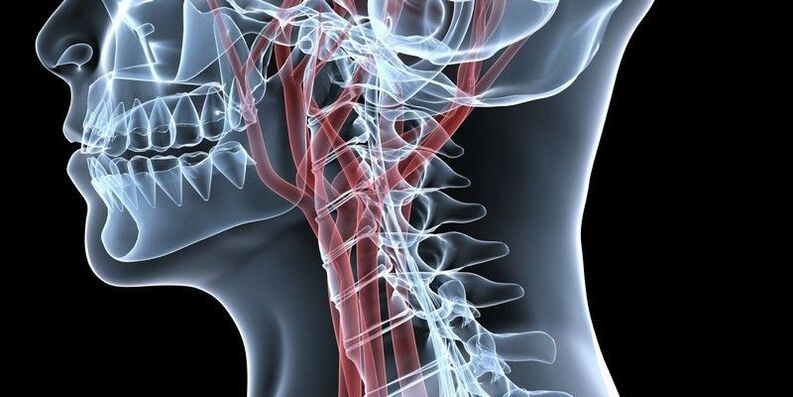
Thoracic osteochondrosis
Osteochondrosis of the chest is rarely diagnosed, and the pain occurs in the spine at the level of the shoulder blades and is worsened by even deep breathing.They are often felt behind the breastbone, which can be mistaken for heart disease.
When the base of the spine is compressed, the risk of internal organ disease increases, particularly:
- Bronchial tubes and lungs (asthma, bronchitis, pneumonia, pleurisy);
- Gallbladder and its ducts, liver (cholecystitis, jaundice, fat malabsorption);
- Pancreas and duodenum (digestive system disorders, left rib pain);
- the adrenal glands, which affects the overall strength of the immune system and may trigger allergies;
- Kidney (urinary system diseases, chronic pyelonephritis, glomerulonephritis, etc.);
- Pelvic organs (digestive diseases, gynecological, urological diseases, infertility).
Fact: Osteochondrosis damage to the intervertebral disc of the seventh thoracic vertebra can lead to the development of diabetes.
Lumbosacral vertebral osteochondrosis
When you have lumbar osteochondrosis, you will experience lower back pain, called lumbago.This is accompanied by burning, excruciating pain that occurs suddenly.Often, patients even find it difficult to sit, stand up, and walk, which may indicate the development of a radiculopathy syndrome.In this case, it's easy to notice how they sit and stand up slowly, avoiding tilting their torso as much as possible.
If complications occur, the main danger is compression of the cauda equina nerve, as this can lead to impaired control of the bowel and bladder emptying processes, as well as paralysis of the legs.In this case, the following may also occur:
- appendicitis;
- Diarrhea, constipation;
- lower abdominal pain;
- Bladder dysfunction;
- Impotence;
- Pain in your knees, feet, hips, or groin area;
- Swelling of the legs.
complication
Osteochondrosis can be the cause of a number of different conditions.Most commonly, if left untreated, it can lead to the formation of herniations and intervertebral hernias.This in turn leads to:
- Discogenic myelopathy, eventually leading to paresis, muscle atrophy, altered tendon reflexes, loss of control of urination and defecation, and even quadriplegia;
- Radiculopathy;
- Scoliosis or other spinal deformity;
- Spinal cord infarction due to compression of the arteries supplying the spinal cord;
- Stroke occurs due to compression of the occipital artery.
diagnosis
Back and neck pain should contact a neurologist or chiropractor.The earlier osteochondrosis is diagnosed, the easier and more effective it is to treat.
To diagnose a disease, doctors interview and examine patients.Based on their results, it can already be assumed that there are degenerative changes in the intervertebral disc.However, for final diagnosis, instrumental diagnostic methods are required, including:
- MRI;
- CT;
- X-rays in two projections.
Magnetic resonance imaging provides the most complete information about the condition of the disc.The surgery is mainly performed in closed equipment with a power of 1.5T.With its help, you can distinguish osteochondrosis from tuberculous spondylitis, osteomyelitis, infectious diseases, etc.
CT scans and X-rays provide information about the bony structure of the spine.With their help, it is possible to detect displacement of the vertebral bodies, the presence of osteophytes and other diseases.
In addition, the following may be specified:
- Ultrasound Doppler imaging of cervical vessels;
- electromyography;
- Laboratory research.
Treatment of osteochondrosis
Treatment plans are developed individually for each patient.In this case, the severity of the degenerative dystrophic process, the presence of complications, the nature of the patient's work activities and many other factors must be taken into account.
All patients must undergo a set of measures, since it is impossible to eliminate pathological changes in the intervertebral disc with drugs alone.Components of conservative treatment for osteochondrosis may include:
- drug treatment;
- osteopathy;
- manual therapy;
- Physical therapy (phonophoresis, ozone therapy, carboxytherapy, compression therapy, radiofrequency current);
- Have individual therapy sessions with a rehabilitator.
All patients diagnosed with disc dystrophy are advised to reconsider their lifestyle.It is necessary to allow time for moderate physical activity, especially for representatives of sedentary occupations or, conversely, for people who are forced to lift heavy objects every day, considering the possibility of changing careers.
However, during the acute phase, adequate rest is recommended.It is necessary not only to rest in bed, but also to wear orthopedic bandages: in case of damage to the cervical spine, use a Shants collar; if there is osteochondrosis in the waist, it is recommended to wear a corset.
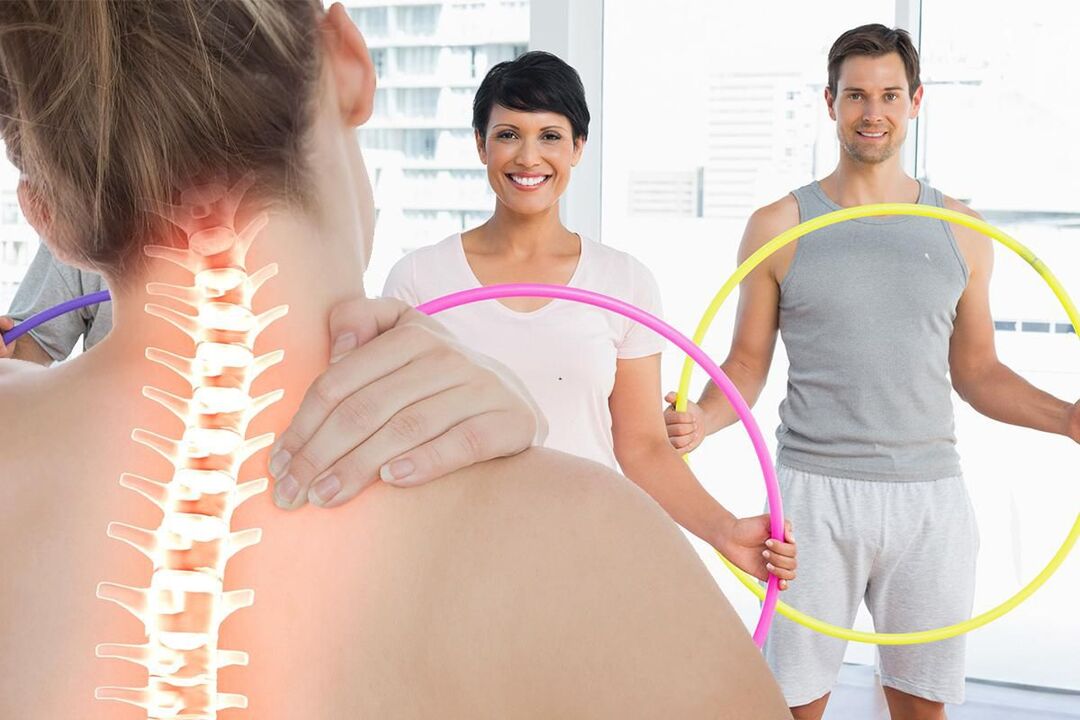
In the first stages of the disease's development, it is usually enough to make lifestyle adjustments, engage in exercise therapy and visit a chiropractor.In more advanced cases, medication and physical therapy are necessary.
Never use dubious means of self-medication, self-prescribe anti-inflammatories, and dubious "therapists" who position themselves on the Internet: you will lose not only time and money, but also your health.
drug treatment
In osteochondrosis, a variety of medications are used to reduce pain, eliminate inflammation and reflex muscle spasms, improve nerve conduction, and activate the tissue regeneration process of the intervertebral disc.
Therefore, the patient is prescribed:
- NSAIDs – Help reduce pain and have anti-inflammatory properties;
- Corticosteroids – have powerful anti-inflammatory properties;
- Muscle relaxants – eliminate muscle spasms and help relieve back pain;
- B vitamins – improve the overall function of the nervous system, especially the conduction of nerve impulses along individual nerves;
- Vitamin D is a drug that improves the condition of bone tissue as well as higher brain functions such as memory, concentration, speech;
- Chondroprotectant – nourishes the disc with compounds needed to build new fibers in the nucleus pulposus;
- Psychotropic drugs – enhance the effects of non-steroidal anti-inflammatory drugs and muscle relaxants;
- Vascular medications – improve blood circulation in the tissues surrounding the spine, ensuring a more active supply of nutrients and oxygen to the discs;
- Anticonvulsants – used in rare cases to relieve very severe cramps.
For very severe pain (usually indicative of complications), patients can undergo a back block, which can produce immediate results.Sometimes, corticosteroid hormones are added to the solution to block it.This also results in significant anti-inflammatory effects.
The lockdown is carried out under absolutely sterile conditions, which can only be achieved in specialized medical facilities.At the same time, they require special knowledge and skills, so only highly qualified health workers are qualified for the task.Otherwise, the risk of infection or nerve fiber damage is high, leading to serious complications.
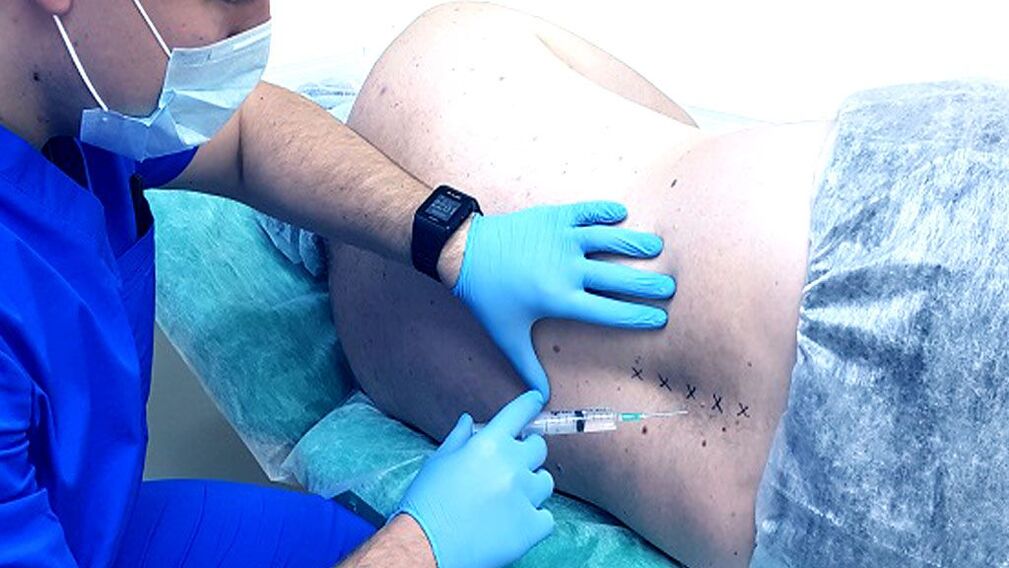
During a blockade, injections are usually given in areas of the nerves on either side of the spine that are causing pain.There are various techniques that can be performed, the specific one of which is chosen individually by the doctor.
However, it is recommended that the number of lockdowns should not exceed 4 times a year.Since acute pain occurs more frequently in osteochondrosis, it is worth first working to eliminate the cause of its occurrence, which is the degenerative dystrophic process of the joint itself.
manual therapy
Manual therapy is performed outside of the exacerbation phase of osteochondrosis.They play one of the leading roles in the treatment of the disease, since the skilled use of manual techniques on the spine and surrounding tissues not only helps to arrest the progression of pathological processes of the intervertebral disc, but also creates the most favorable conditions for its recovery.
Additionally, certain techniques can have a positive impact on the function of internal organs.For example, one approach is to restore normal connections between the organs and the nervous system by normalizing the position of each vertebra, removing pressure on the spinal roots, blood vessels, and meninges.This makes it possible to eliminate the hidden causes of the occurrence of the above-mentioned cardiac, bronchial, pulmonary, renal, gastrointestinal and reproductive system diseases and lead to complete recovery.
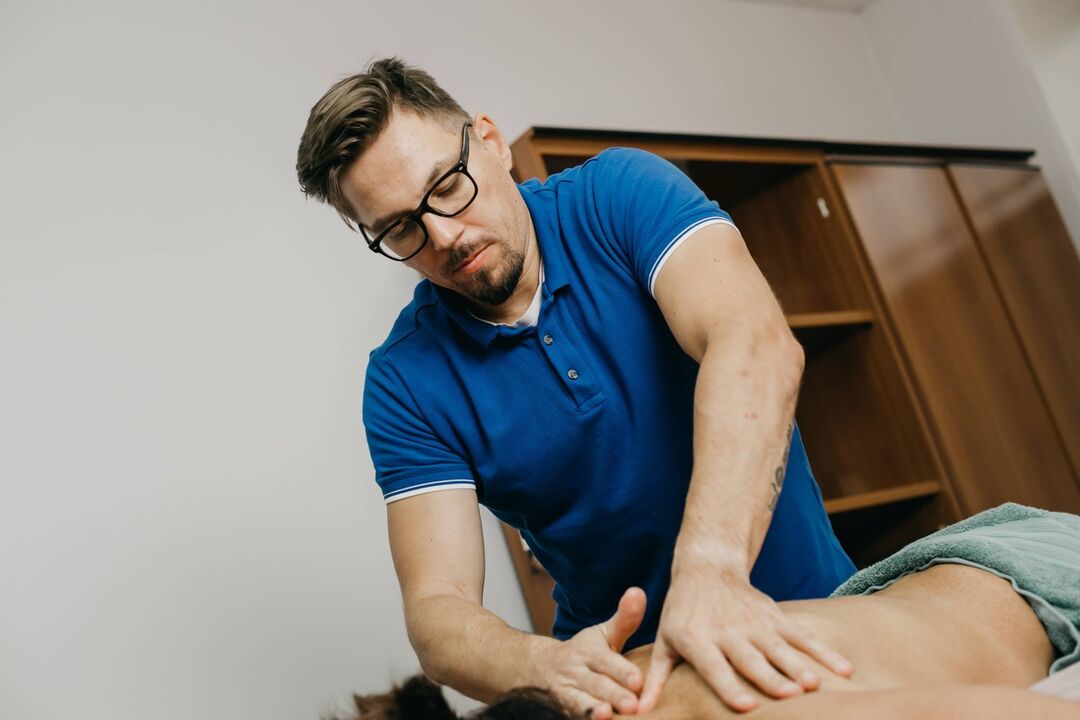
Due to the precise action of the jewelry on the spine, it not only activates blood circulation and accelerates metabolism like a classic therapeutic massage, but also activates natural self-healing mechanisms.By eliminating spinal pathological changes such as spinal curvature and incorrect vertebra position through manual therapy, you can further strengthen your immune system, improve your overall health, and significantly improve your quality of life.
Positive changes can be noticed after the first treatment, and their severity will only increase in the future.
physiotherapy
Physical therapy procedures increase the effectiveness of all other treatments for osteochondrosis and help reduce pain.Most commonly used:
- Electrophoresis - uses electric current to ensure that anesthetics, anti-inflammatory agents and other drugs directly penetrate into the inflammatory site, allowing you to quickly obtain obvious treatment effects;
- Ultrasound therapy - the action of ultrasound provides analgesic effects, increases the intensity of metabolic processes affecting the area, creating prerequisites for high-quality recovery of thin intervertebral discs;
- Stress Reduction Therapy - stretches and massages the spine on a special ribbed mattress to activate blood circulation and increase muscle tone;
- Traction therapy or spinal traction – performed using special equipment, creates a tensile load on the spine so that the distance between the vertebrae increases and the pressure on the worn discs decreases dramatically, allowing them to recover more aggressively.
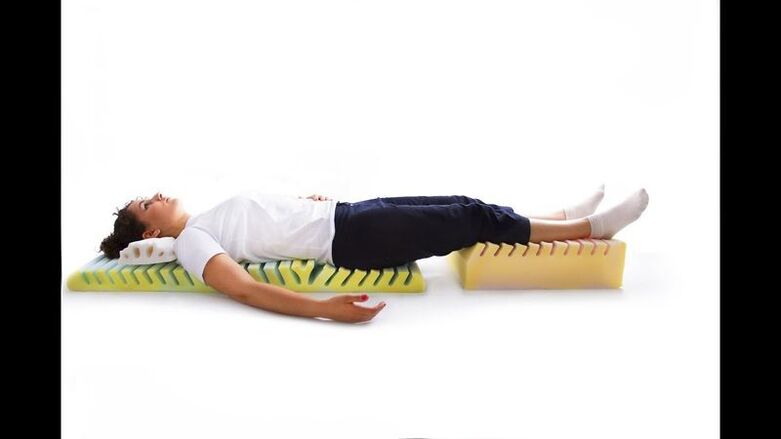
All programs are prescribed in 10-15 sessions.When choosing them, they take into account not only the condition of the discs, but also the presence of concomitant diseases, since some of them contraindicate certain physical effects.
exercise therapy
Exercise plays an important role in the treatment of osteochondrosis, since the correct choice of exercises targeting injuries in different parts of the spine can help build strong muscle bundles while eliminating increased muscle tone.This will provide good support to the spine and halt the progression of the disc degeneration process.In addition, exercise therapy helps activate blood circulation and increase the intensity of metabolic processes.
It is the task of the rehabilitation physician to develop a physical therapy plan.Based on the severity of spinal lesions, the characteristics of the patient's physical development, age and other factors, he will develop a set of optimal exercises that will bring optimal load to the muscles and spine after implementation.
The first session must be conducted under the supervision of a doctor.Once the patient learns to perform each exercise correctly, they can continue practicing at home.It is important to avoid any sudden movements.All exercises are performed slowly and steadily each day, with gradually increasing load.But pain during exercise is a good reason to refuse to engage in pain-causing exercise.

prevention
It is much easier to prevent the development of a disease than to deal with its consequences after the fact.Since osteochondrosis will happen to everyone sooner or later, possible risks should be considered as early as possible and efforts should be made to prevent it.Therefore, everyone should adhere to the following recommendations:
- Avoid physical inactivity, exercise, swim regularly, and take regular breaks to warm up during sedentary work;
- Pay attention to your posture when walking or sitting;
- Purchase high-quality orthopedic mattresses and pillows;
- Follow proper weightlifting technique: straight back, bend knees;
- Swap your casual shoes for your most comfortable shoes and save your dress shoes for special occasions;
- Eat correctly so that your body does not suffer from nutritional deficiencies and your weight remains within a normal range.
There is only one way to avoid the appearance and manifestations of osteochondrosis symptoms - start taking care of yourself and your health.Since osteochondrosis is not just a disease, but a complex of muscle tension and neurodystrophic changes, which is the body's response to physical inactivity, chronic static tension of the spinal muscles, environmental conditions and chronic neurosis, it is especially common in urban dwellers, swimming in swimming pools and stretching exercises (including yoga).
Therefore, osteochondrosis is a very common disease, but by paying careful attention to your health, you can effectively fight it at any age.But nothing good will come of ignoring the problem and sooner or later the patient will be forced to lie on the operating table.
























